We discussed taking action for better health and long life in the previous post.
To eat healthy, live healthy and be healthy; men and women have tried various types of diets to lose and maintain weight, gain muscle, and boost concentration as well as increase productivity being part of lifestyle strategies for better health.
THE VARIOUS DIET PLANS
In the past, there were the GM Diet and Atkins Diet among others.
Now among many diet plans, there are 9 popular ones:
• Intermittent Fasting
• Mediterranean Diet
• The Ketogenic Diet
• If It Fits Your Macros
• Veganism
• Carnivore Diet
• Paleo Diet
• Dessert with Breakfast Diet
• Sirtfood Diet
No diet is the be-all, end-all for your health goals. You can lose weight in any diet, as long as it is calorie deficit, (that is you burn more calories than you ingest). You can choose whichever diet suits you and your general health conditions as long as the diet follows the calorie deficit rule.
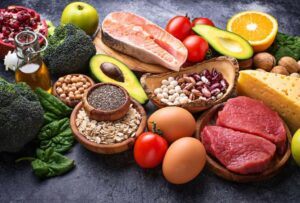
Your diet should be wholesome and comprises of carbohydrate (even if low-carb), high quality fats and protein. For deficiencies in vitamins and minerals, supplements, could be added. However, it is best to consult a doctor or a nutritionist before going on a diet if you already have a medical condition such as diabetes, hypertension, kidney and heart impairments.
In this post, we will introduce in general the types of diet as listed above.
1. INTERMITTENT FASTING
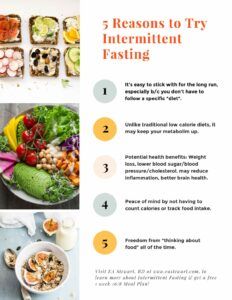
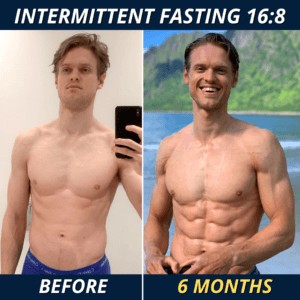
This is not a diet per se, but more of an eating strategy. You either eat within a certain time frame and fast thereafter or you fast a set number of hours before your meal.
Most people apply the 8:16 split, that is you consume your calories in an eight-hour eating window and fast for the other 16 hours of the day. You can also do a 10:16, 16:10, or even 6:20 eating: fasting split.
In intermittent fasting, you are eating fewer calories since you are compacting them into a narrower time frame, as opposed to consuming food throughout the day.
During the fasting period, zero-calorie beverages such as black coffee, herbal teas, and sparkling and plain water can be consumed.
Several studies have shown that intermittent fasting will not only lead to weight loss but also help improve insulin resistance, reduce oxidative stress on your cells, stabilize blood sugar levels, and reduce the incidence of strokes.
2. MEDITERRANEAN DIET

As the name implies, the Mediterranean Diet is derived by the eating culture of people who live near the Mediterranean Sea. Those countries include Greece, Italy, Spain, Lebanon, Turkey, and more. These countries have some of the longest longevity of populations in the world. According to a study in the Lancet Medical Journal, Spain’s citizens’ live expectancy is an average age of 85.8 years; compared to that of the United States’ of about 78.5 years.
The Mediterranean diet is rich in heart-friendly foods such as vegetables, fish, fruit, grains, olive oil, and nuts. Consumption of red meat is kept to a minimum, and dairy intake is moderate and consists of high-quality sources such as low sugar yogurt and cheeses.
Experts have observed that people in the Mediterranean have healthy lifestyle habits. Typically, these people are more physically active, (less sedentary), drink and smoke less, and have better sleeping habits.
A study published in the American Journal of Clinical Nutrition found that not only did the Mediterranean Diet leads to sustainable weight loss, but it was also the easiest for people to adhere to when compared to intermittent fasting and the paleo diet. When adhered to consistently, over a period of time, the diet has also been found to reverse symptoms of diabetes and cardiovascular diseases.
3. THE KETOGENIC DIET
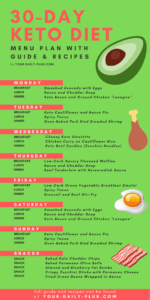
In recent years, the Ketogenic diet has captured the attention of the market. Many recipe books encompassing a complete array of meals from daily meals to desserts have been compiled.
But what is it actually? Keto, for short, is a diet that targets fat as the primary calorie source (65-75 percent of your daily calories), with moderate protein consumption (20-30 percent) and very low carbohydrates or carbs (only about five percent, though some versions prohibit carbs altogether). Which means you’ll be eating a lot of avocados, eggs, and cheeseburgers without bun.
The Keto diet was designed to keep the body in a near-constant state of ketosis, a metabolic state where the body creates ketones from fat to use as energy instead of sugar from carbs (the body’s primary and preferred energy source). There have also been claims it may help treat cancer and even respiratory illnesses.
As mentioned above, weight loss comes down to calories in vs. calories out. Several studies point out keto is no more effective for weight loss when calories are matched with other diets.
4. IF IT FITS YOUR MACROS
Most people cannot stick to a specific diet regiment, eating the same thing day in and day out. It takes the fun out of meals and make life unbearable. “If It Fits Your Macros,” is a more flexible diet approach that lets you eat whatever you want as long as you hit your pre-determined protein, carbs, and fat ratios.
First, you must determine how much of each macronutrient, (carb, protein and fat) you need to eat per day to accomplish your targets, whether to lose weight or gain weight. A dietitian is the person to consult for a macro calculator.
An acceptable start would be: the macronutrient range of 45-65 percent of your daily calories from carbs, 20-35 percent from fat, and 10-35 percent from protein.
From there, make sure that everything you eat fits into those macros by tracking what you eat on an app like MyFitnessPal. You can eat a slice of pizza or your favourite cake as long as you do not exceed your carbs or fat limit. This could prove to be difficult for many people. If you over indulge at lunch, you will need to reduce in proportion for the rest of the day and, theoretically, may be forced to eat a pure protein meal for dinner.
IIFYM is often touted as an anti-diet, but it is absolutely a diet. Your macros will only allow for so many treats. Most of the time, you’ll be eating the typical healthy foods, so your macros remain balanced and you stay full.
5. VEGANISM

Veganism is one of the fastest-growing movements in the United States and Europe. Six percent of Americans identified as vegans in 2017, up from just one percent in 2014. And the alternative meat industry — which includes products such as Beyond Burgers — is expected to be valued at $140 billion over the next decade.
While mainstream media considers it a diet, wherein followers avoid animal-based products, some consider it a lifestyle (many vegans avoid wearing any leather or animal hide). A few years ago, vegans would only eat beans, legumes, grains, egg-free pasta, fruits, and vegetables. But advances in technology have allowed the alternative meat industry have provided vegans access to a wider variety of products.
Various studies point to veganism’s benefits. One study that followed 250,000 people and their eating habits found that vegans had a 25 percent lower risk of heart disease and an eight percent lower risk of cancer than those who ate animal products.
Vegans, however, are at a higher risk of being deficient in vitamins and minerals such as iron, zinc, vitamin D, calcium, and omega-3 fatty acids, all of which are vital to everyday health.
6. CARNIVORE DIET
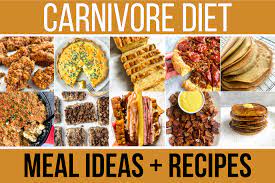
The Carnivore diet is the opposite of a Vegan diet. Vegetables are not a part of the Carnivore diet. Carnivore dieters only eat animal-based products — meat, cheese, milk, animal-based fats, and eggs (though some variations only allow meat, no eggs, and dairy). Strictly there are no grains, no vegetables, and no fruits.
Also known as the Zero Carb Diet, it’s basically a variation of the keto diet since it’s fat and protein are prioritized over carbs. This diet approach flies in the face of scientific research that proves that limiting your meat intake can extend your life and improve cardiovascular health. It claims that it can fight inflammation and prevent nutrient deficiencies. It can lead to weight loss, especially since protein increases the body’s thermic effect of feeding —the energy it takes to digest food.
The scientific consensus, is that this diet may lead to an increased risk of heart disease, cancer, gut problems, and an overall risk of death because there are no fruits or vegetables which provide the fibre.
7. PALEO DIET

The Paleo diet, sometimes called “The Caveman Diet,” could be considered better than the carnivore diet. In addition to meat, you’re also eating fish, vegetables, fruit, nuts, and seeds. In this diet you need to avoid grains, dairy, processed foods, beans, legumes, and sugars.
Studies have shown that it’s effective in helping people lose weight, drop their blood pressure, and improve other blood markers. Many researchers, however, do not think there is ample evidence of its positive impact on health and thus more research needs to be done. Others were not in favour of excluding whole grains, which has been shown to prevent heart disease and diabetes.
8. DESSERT WITH BREAKFAST DIET



![]()
How about adding a biscuit or a slice of cake to your morning plate of eggs and oatmeal? Well, it is possible to do so. The Dessert with Breakfast Diet is exactly what it sounds like — a sweet treat to accompany your breakfast in the morning. It sounds too good to be true, but there is proof that it works.
A 2012 study in the journal Steroids found that people who ate a high-carb, high-protein meal that included a dessert lost more weight and kept it off for the duration of the eight-month-long study than those who had a low-carb, high-protein breakfast.
Some studies have shown that sugar may be addictive, and some people may not be able to stop at one. Another study had participants treated themselves to snack foods such as Cheetos, Snickers, and Coca-Cola. After tasting once, their second treat rose by an average of 38%. Processed junk food is engineered to taste great, so if you are not careful, you may not be able to resist common junk foods. All your diet goals will thus, be in vain.
9. SIRTFOOD DIET


The Sirtfood Diet has grown in popularity in recent years due to the support and endorsement by certain celebrities. Created by nutritionists Aidan Goggins and Glen Matten, the diet focuses on foods high in sirtuins, (or sirts), a group of proteins found in the body that regulate metabolism.
Foods high in sirts include red wine, dark chocolate, walnuts, Medjool dates, walnuts, arugula, coffee, capers, and extra-virgin olive oil.
Following the Sirtfood Diet, however, is not as simple as just eating those foods. Goggins and Matten recommended a two-phase approach. You drink three sirtfood green juices and eat one full meal rich in sirtfoods, which amounts to 1,000 calories for three days, in the first phase. On days four to seven, your caloric intake is increased to 1,500.
In Phase two, you eat three sirtfood-rich meals per day and a green juice for two weeks. After that, you can either repeat that process or stick to a diet rich in sirts while continuing to drink at least one juice per day.
The celebrity endorsements aside, there is little evidence that this specific diet works for weight loss or better health. One study found that mice with high sirt levels had more fat loss than other mice. However, there is no mention of total calories consumed or other notable weight-loss factors.
MAINTAINING A HEALTHY DIET
Keeping to a healthy diet plan is an important factor in maintaining your health. Nutritious food keep your body function at its best. It also helps to chronic diseases such as heart disease, stroke and diabetes at bay. There are many references to healthy recipes that do not have to be expensive or difficult. Here are a few tips for eating healthy:
-
-
- Eat a variety of fruits and vegetables
- Include whole grains in your diet
- Avoid processed foods and sugary drinks
- Make sure you are getting enough protein and healthy fats
-
Eating healthy doesn’t have to be complicated. By following these simple tips, you can easily improve your diet.
CONCLUSION
Diet refers to whatever we eat every day. Diet is based on culture and habits. What work for one person may not work for another.
The best diet for you is the one that will help you reach your goals but that you can afford to follow consistently with ease and comfort. Over a period of time, the diet may lead to better health, delay the onset of diseases and promoting longevity.
Check out the following programs:
A Natural Blood Pressure Program
Paleo Diet -The only Paleo Cookbook You ever Need
Note: We may earn commissions when you purchase through our affiliate links.


